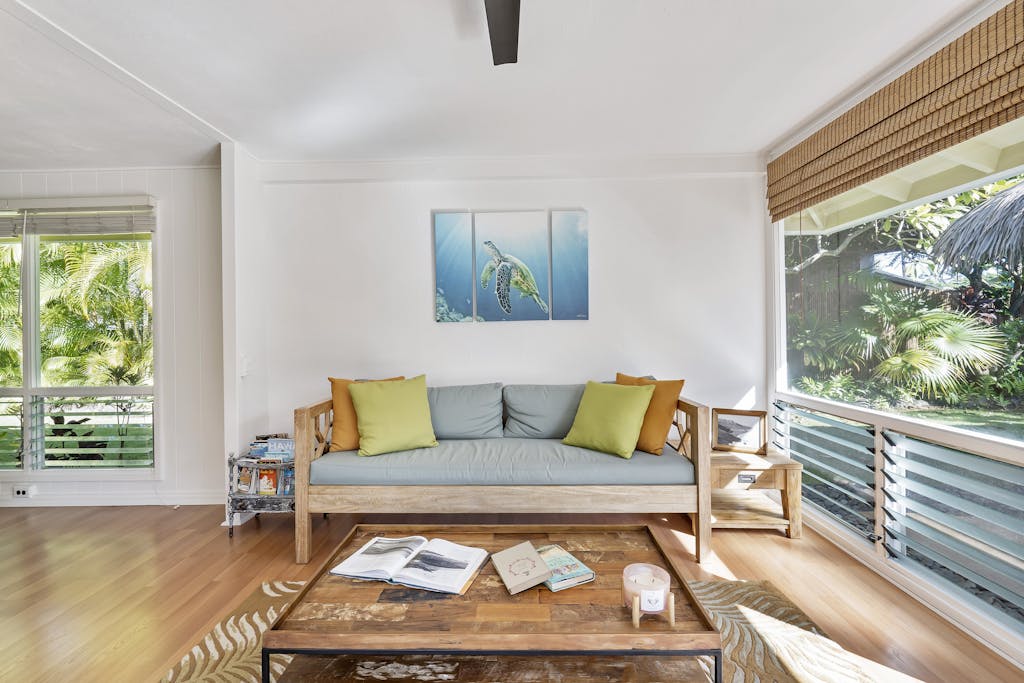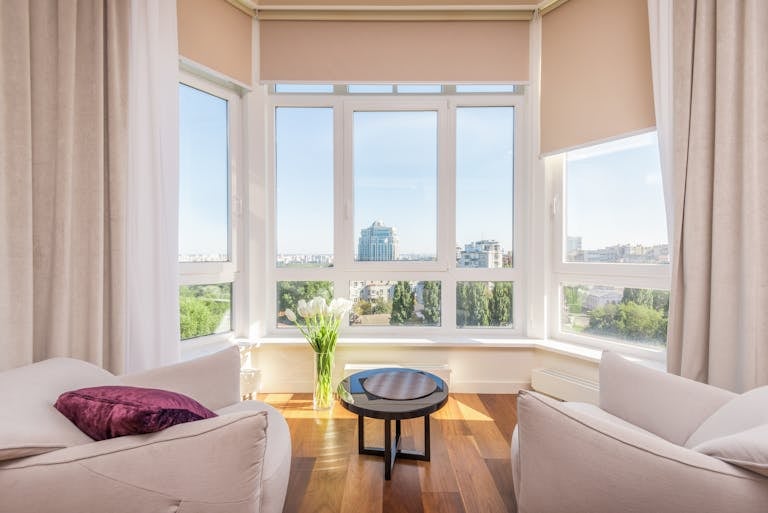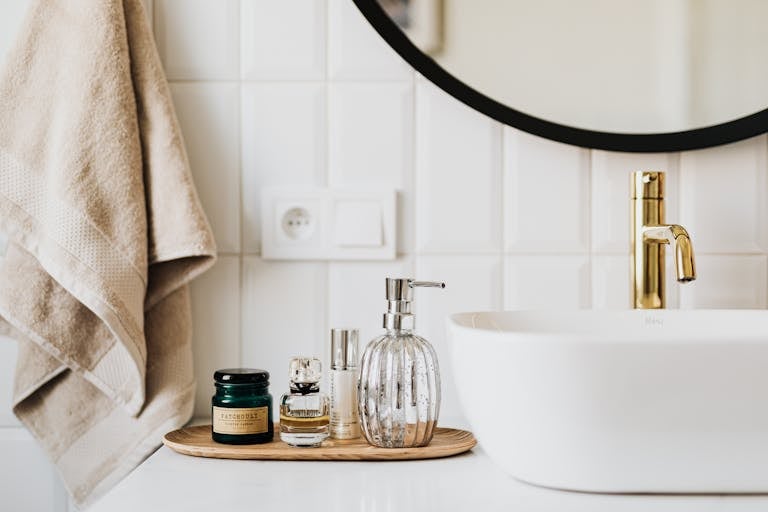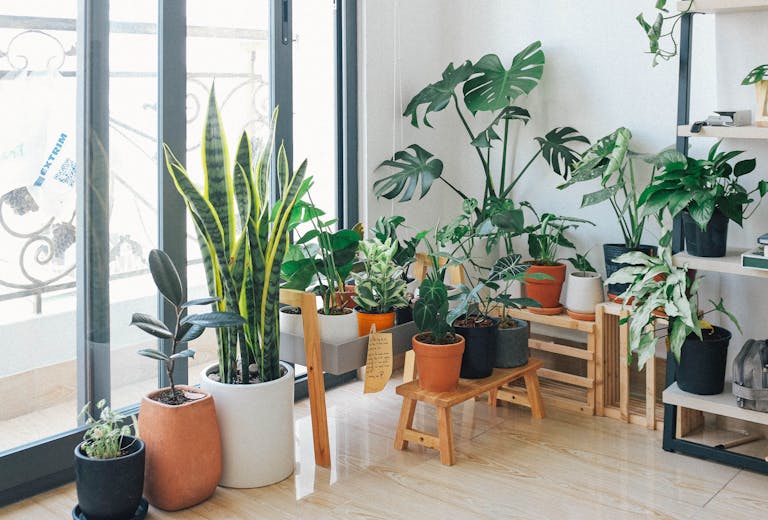Feng Shui Living Room: How to Create a Balanced Space

Creating a balanced and harmonious living room goes beyond aesthetics or smart home life hacks. By incorporating Feng Shui principles, you can transform your living space into a place of peace, comfort, and positive energy (the spruce). Whether you’re new to Feng Shui or have been exploring its principles for years, this guide will walk you through practical steps to apply Feng Shui in your living room and create a space that nurtures and inspires you.
In this post, we’ll cover:
- What is Feng Shui?
- Living room layout tips
- Feng Shui living room colors
- Essential Feng Shui living room rules
- How Do I Know If I Have a Good Feng Shui Living Room
- Where to put a mirror for Feng Shui
- Common mistakes to avoid
Let’s dive in!
What is Feng Shui?
Feng Shui, an ancient Chinese practice, literally translates to “wind” and “water.” It focuses on balancing the energies in a space to ensure harmony, good health, and prosperity. Feng Shui principles are centered on the flow of energy, or “chi,” within a home, and the living room is one of the most important spaces to get right. Why? Because it’s often the center of the home, where family and friends gather. By arranging furniture and choosing décor with intention, you can channel positive chi and create a balanced, inviting atmosphere.
How Does Feng Shui Impact a Living Room?
Your living room is a shared space, making it the perfect area to focus on balance. Feng Shui living room design is all about enhancing the flow of energy, making sure furniture and décor support a sense of openness, and ensuring the room feels welcoming and peaceful. The right Feng Shui layout can create a harmonious environment where family members feel connected, and guests feel comfortable.

Feng Shui Living Room Layout Tips
The layout of your living room is critical when it comes to Feng Shui. It’s essential to create a space where energy can flow freely, which means avoiding clutter and placing furniture in a way that supports comfort and conversation.
1. The Command Position
One of the most important Feng Shui living room layout rules is ensuring the main piece of furniture—usually the sofa—is in the command position. This means it should face the room’s entrance, but not be directly in line with the door. Placing the sofa here allows those sitting on it to see who’s entering, which promotes a feeling of safety and security.
Tip
If your sofa cannot face the entrance, place a mirror opposite the door to reflect the entryway, creating the same effect.
2. Balance the Elements
Feng Shui relies on five key elements: wood, fire, earth, metal, and water (Laura Morris). Incorporating these elements into your living room layout can help maintain balance. For example, you might add wooden furniture (wood element), candles or a fireplace (fire element), stone or ceramics (earth element), metal décor (metal element), and a fountain or aquariums (water element).
Tip
Try to balance these elements without overcrowding the room. Use them in subtle, complementary ways to create harmony.
3. Keep Pathways Clear
Good Feng Shui living rooms allow energy, or chi, to flow freely. This means ensuring that pathways around furniture are open and easy to navigate. Avoid placing large pieces of furniture in the middle of the room or directly in front of doorways, as this can block the flow of energy.

Feng Shui Living Room Colors
Choosing the right colors is essential for creating a balanced Feng Shui living room. Different colors represent different elements and can have a significant impact on the energy in a space.
1. Earthy Tones
Warm, earthy tones such as beige, tan, and soft yellows are great for living rooms because they promote stability and nourishment. These colors are connected to the earth element, grounding your space and making it feel welcoming.
2. Shades of Blue and Green
If you want to incorporate the wood and water elements, consider blues and greens. These colors are associated with growth, calmness, and renewal, making them ideal for creating a peaceful atmosphere in your living room.
3. Red and Orange Accents
Red and orange are bold colors connected to the fire element. While you don’t want to overwhelm your space with these vibrant hues, adding them in small accents—such as cushions, candles, or artwork—can energize the room and promote warmth and passion.
4. Neutral Colors
Neutral colors like white, gray, and soft pastels are excellent for maintaining balance in a living room. These colors don’t dominate the space, allowing the flow of energy to remain calm and steady. They can also serve as a backdrop for bolder accents.
Tip
Balance is key when it comes to color. Avoid using too much of any one color or element and ensure that your chosen palette creates a sense of harmony.
Feng Shui Living Room Rules
There are several essential Feng Shui rules to follow when designing a balanced living room. These rules help ensure the space feels welcoming, comfortable, and free of negative energy.
1. Declutter the Space
Clutter blocks the flow of energy, so keeping your living room clean and organized is vital for good Feng Shui. Remove any items that don’t serve a purpose or bring joy to the space. The goal is to create an open, airy environment where chi can flow freely.
Tip
If you have a lot of items, invest in stylish storage solutions to keep things tidy without sacrificing décor.
2. Choose the Right Furniture
Furniture should be both functional and comfortable. In Feng Shui, rounded edges are preferable to sharp corners, as they allow energy to flow more smoothly. Avoid placing too much furniture in the room, as this can make the space feel cramped and block chi.
3. Add Natural Elements
Incorporating natural elements like plants and water can significantly improve the Feng Shui of your living room. Plants purify the air and represent growth and vitality, while water elements (such as a small fountain) can help enhance the flow of energy.
4. Lighting Matters
Lighting is crucial in Feng Shui because it represents energy. Ensure your living room has plenty of natural light during the day, and use soft, warm lighting in the evenings to create a cozy, relaxing atmosphere.
How to Feng Shui Your Living Room
Now that you understand the basic principles of Feng Shui, here’s a step-by-step guide on how to Feng Shui your living room:
- Declutter: Start by clearing out any unnecessary items, as clutter disrupts the flow of energy.
- Choose a Layout: Arrange your furniture in a way that promotes conversation and comfort, keeping the sofa in the command position.
- Balance the Elements: Incorporate the five elements—wood, fire, earth, metal, and water—into your décor.
- Add Color: Choose colors that promote balance and harmony, such as earthy tones or calming blues and greens.
- Focus on Lighting: Ensure your living room is well-lit, with plenty of natural light during the day and warm, inviting lighting in the evening.

Where to Put a Mirror in Your Living Room for Feng Shui
Mirrors are a powerful tool in Feng Shui, as they can amplify energy and reflect positive chi. However, it’s essential to place them correctly to avoid negative consequences.
- Best Placement: Place a mirror where it reflects beautiful views, such as a window or garden. This helps bring the outside world’s positive energy into your living room.
- Avoid Reflecting the Front Door: Mirrors should not face the front door, as this can reflect energy away from your home, causing chi to bounce right back out.
- Enhancing Natural Light: If your living room lacks natural light, place a mirror opposite a window to help reflect light around the room.
How Do I Know If I Have a Good Feng Shui Living Room?
You’ll know your living room has good Feng Shui when it feels balanced, comfortable, and welcoming. Here are some signs of a well-balanced space:
- The room feels open, with a natural flow of movement.
- You feel calm, relaxed, and energized when spending time in the room.
- Family members and guests feel comfortable and at ease.
In Which Direction Should We Not Sit?
n Feng Shui, the direction you face can have an impact on energy flow. Ideally, you should avoid sitting with your back to the entrance, as this can create a sense of vulnerability. Instead, try to face the door, or at least position yourself where you can see it without turning your back.
Common Feng Shui Living Room Mistakes to Avoid
- Overcrowding the Room: Too much furniture or décor can block the flow of energy, making the space feel cramped and unwelcoming.
- Ignoring the Command Position: Always place your main seating in a position where you can see the entrance to the room.
- Using Too Many Bold Colors: While red and orange can energize a space, too much of these bold colors can create an overwhelming atmosphere. Balance is key!
Conclusion
By applying Feng Shui principles to your living room, you can create a space that feels balanced, harmonious, and welcoming. From choosing the right layout and colors to incorporating natural elements and keeping clutter at bay, small changes can have a big impact on the energy in your home.
Remember, Feng Shui is about balance, so take your time, experiment with different layouts and elements, and listen to how the room feels. Soon enough, you’ll have a living room that not only looks beautiful but also promotes peace, relaxation, and positive energy.
Now that you know the basics, it’s time to start transforming your living room into a harmonious, balanced space. Happy decorating!






